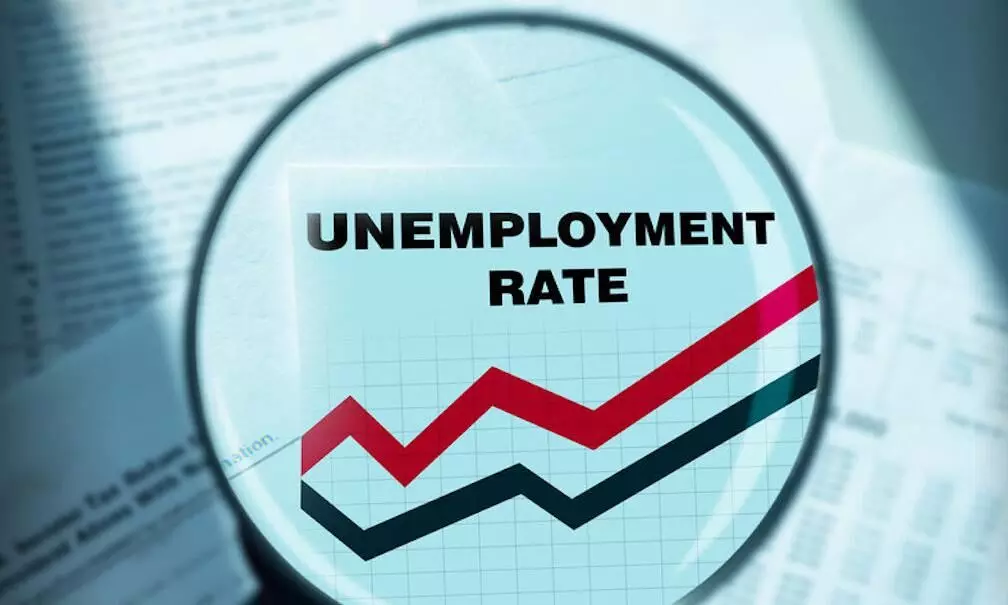Opinion: Why Union Budget lacks direction to tackle unemployment, trade deficit
After the pandemic, the government faces challenges related to unemployment, rising prices, inadequate healthcare, expensive education, and declining household savings
By Irfan Aziz
Hyderabad: The recent Union Budget doesn’t provide a clear plan for the country’s growth and development. Instead, it affects the overall well-being of all sections of society. After the pandemic, the government faces challenges related to unemployment, rising prices, inadequate healthcare, expensive education, and declining household savings. Let’s examine the budget from five different angles.
1. Unemployment
The slowdown has created a jobs crisis post-pandemic, perhaps the biggest challenge confronting this government. By June 2024, India’s unemployment rate had increased to 9.2 percent according to CMIE data, up from 8 percent in 2023. India is facing an employment crisis over the last few years, coupled with an improving yet relatively high trade deficit. The lack of sufficient job opportunities is a pressing concern for the young generation, which can lead to socio-economic instability. To bridge the skill gap and enhance employment prospects, a more unified approach towards functional literacy and competitive skilling is required — one that aligns training programs with job market requirements, ensures sustainable funding, and integrates robust mechanisms for tracking progress and impact.
2. High Trade Deficit
The high trade deficit indicates that India imports more than it exports, which can weaken the country’s economic position. A trade deficit is about an imbalance between a country's savings and investment rates. It means a country is spending more money on imports than it makes on exports. The budget could have supported manufacturing in labor-intensive sectors such as apparel, leather, tourism, and hospitality through mechanisms like the production-linked incentive scheme, etc., and simplification of GST would have empowered the Manufacturing sector and MSME to accelerate rapid growth and expansion.
3. Fiscal Deficit
A high fiscal deficit implies that the government is borrowing more to finance its spending, which can lead to increased debt levels and higher interest payments in the future. More aid to allies, Bihar and Andhra Pradesh could lead to major challenges in terms of managing fiscal deficit gaps. However, the Finance Minister targeting 4.9% by the year 2025 which seems unlikely at this stage. A huge sum of money (larger financial packages from the Centre) has been given to both these states, approx. $6 Billion as packages and this could probably increase the fiscal deficit further. This in turn would put pressure on the people and the middle class, because, the Government would have to bridge the gap, and to do so, they would levy more taxes, either direct or indirect. Interestingly, these two states, its neck deep in corruption. In the last 2 months, more than 15 bridges have collapsed in Bihar and in Andhra, development is very slow and there are no remarkable changes are visible.
4. Social sector spending
India currently spends only 2.1% of its GDP on public healthcare and 3% on education and skill development. This isn’t enough for comprehensive growth and taking advantage of the country’s young population or the demographic dividend.
To improve, India should increase healthcare spending to at least 3% of GDP and education spending to 6%. This will help achieve universal health coverage and the goal of becoming a “developed country” by 2047. Additionally, investing in research and development (R&D) up to 2.5% of GDP will promote innovation and intellectual property development. It's important that we need to refocus on education, skill development, and healthcare so, that India can prepare its workforce for the future and enhance the overall quality of life and productivity.
5. Infrastructure& Public Spending
India’s infrastructure—like roads, railways, and urban development—doesn’t match its economic goals. This poor infrastructure causes problems for businesses, increases costs, and lowers citizens’ quality of life.
To improve, the budget should focus on big infrastructure projects. More funding for roads, railways, and urban development is essential. Encouraging partnerships between the public and private sectors and making it easier for foreign investment will speed up infrastructure development. Investing in smart cities, high-speed rail, and rural connectivity will create a more efficient economic environment.
This budget is a crucial chance for India to tackle economic challenges. The right policies can boost domestic growth and make India attractive for global investments. Balancing fiscal responsibility with ambitious reforms will unlock India’s potential. A holistic approach that considers economic, social, and environmental goals will ensure sustainable and inclusive growth for everyone.
Modi 3.0, a conclusion on the budget outlook…
The Budget didn’t provide a clear economic strategy or vision for the future. Instead, it focused on addressing underlying issues through various schemes. However, it’s unclear how effective these schemes will be or how they’ll work.
Disclaimer:
The writer is Irfan Aziz, All India Professional Congress, president of Secunderabad Chapter& Congress Manifesto Head from Telangana and TPCC state convenor Media and communications department.
The views and opinions expressed in the article are those of the author and do not reflect the official policy or position of NewsMeter.